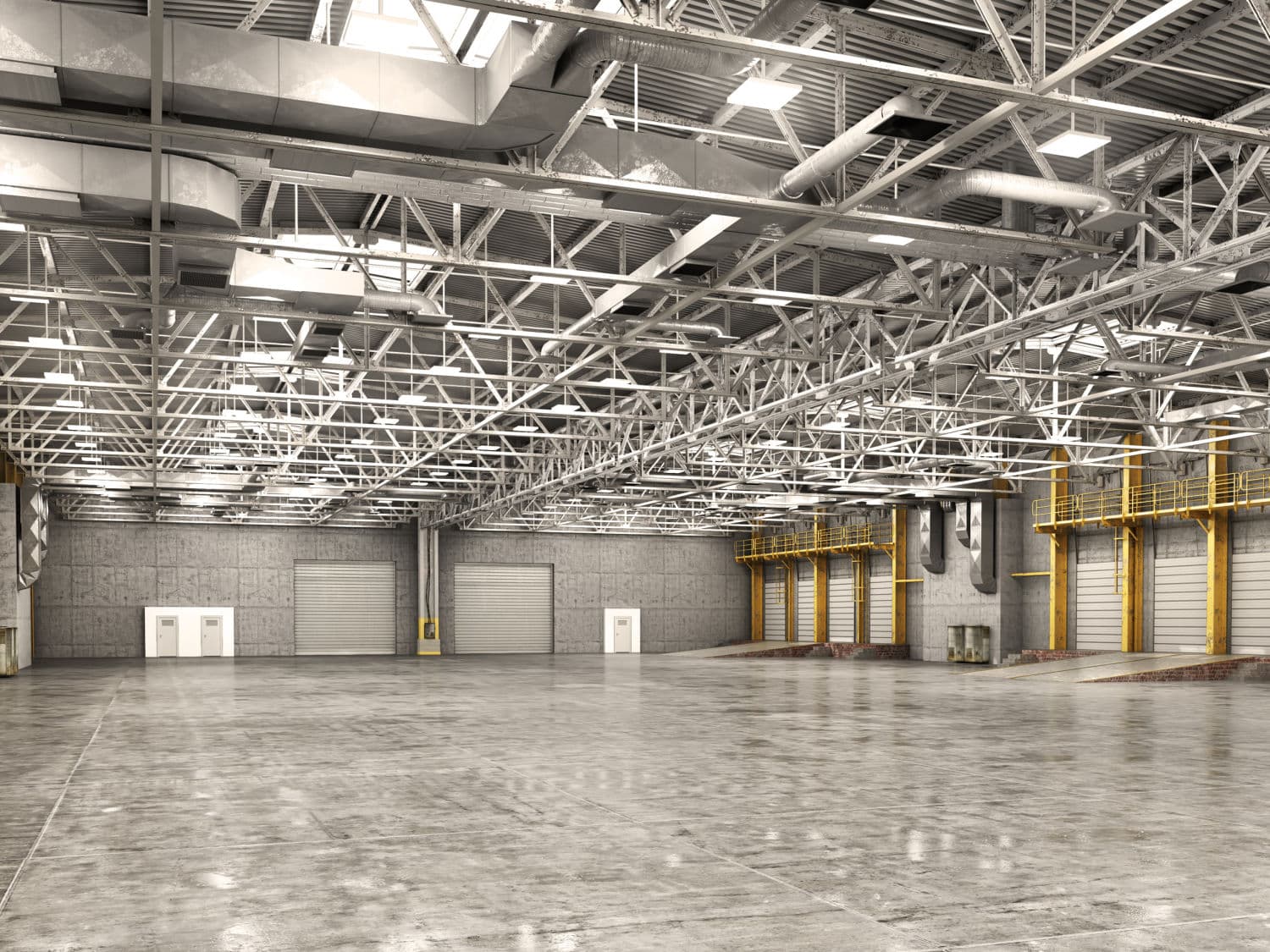Canadian industrial market update - Q3 2025
Our quarterly update on the Canadian industrial market, including availability rate, completions and under construction data.

Key highlights
The imposition of US tariffs significantly impacted the Canadian economy, dampening investor confidence and leading to a “wait-and-see” approach for capital deployment across the industrial sector
Canada’s national industrial availability rate remained flat from the previous quarter at 6.2%
The effects of trade disputes extended beyond the industrial sector, contributing to cautious retail spending and exacerbating unemployment, particularly in the industrial hubs of Southern Ontario, such as Windsor, Oshawa, and Toronto
The percentage of available space offered for sublet decreased by 190 basis points year-over-year to 13.1%, signalling that many occupiers, whether seeking greater flexibility or facing pressures on existing commitments, were hesitant to take on additional space
The national industrial construction pipeline marked a downward trend in the third quarter of 2025 compared to prior robust periods, with 55% of the 27.6 million square feet remaining available for lease, underscoring a significant pullback in demand
In the third quarter of 2025, the national industrial availability rate remained flat at 6.2%
In the third quarter of 2025, the Canadian industrial sector navigated a challenging period marked by disruptions from the Canada-US trade tensions and broader economic shifts. These factors collectively tempered investor confidence, leading to a stagnant national industrial availability rate and a notable pullback in investment volumes. While regional differences were observed, the overarching trend pointed to a softening of demand across all major Canadian industrial markets.
National market trends
Throughout the third quarter, the Canadian industrial sector faced significant challenges from shifting market dynamics. A key factor was the imposition of new US tariffs, which disrupted the deeply integrated Canada-US trade network. These tariffs created widespread uncertainty and negatively impacted the demand outlook across the sector. At the same time, the market grappled with a short-term oversupply of industrial space, a direct consequence of the substantial volume of new deliveries in 2023. This imbalance affords tenants greater access to higher-quality spaces at more competitive rental rates.
Amid this period of heightened volatility, investors adopted a strategic “wait-and-see” approach to assess the potential risks associated with new commitments. This pause resulted in an over 20% year-over-year decline in national industrial investment volume by mid-2025. This downturn underscored a widespread reluctance to deploy capital until market conditions stabilized, and future growth trajectories became clearer.
Market adjustments and cautious occupier sentiment
These market disruptions contributed to the stagnancy in Canada’s national industrial availability rate, which remained at 6.2% in the third quarter of 2025. In response, developers recalibrated their project pipelines to align with a more moderate outlook. This adjustment aimed to prevent further oversupply and better match future development with anticipated demand.
Figure 1: Industrial availability (Q3 2024 vs. Q2 2025 vs. Q3 2025)

Further reflecting occupier caution, the percentage of available space offered for sublet decreased by 190 basis points year-over-year to 13.1%. This indicated that many occupiers, whether seeking greater flexibility or facing pressures from existing commitments, were hesitant to take on additional space. In response, property owners implemented more flexible leasing options and incentives to retain their current tenant base and reduce vacancy risk.
Economic repercussions in Ontario
The economic impact of trade disputes was particularly acute in regions with a strong industrial base, notably Southwestern and Southern Ontario, which have a heavy reliance on the automotive, agriculture, and fabricated metals industries. According to data from Statistics Canada's Labour Force Survey (LFS) in August 2025, the US tariffs caused significant regional economic instability. This was clearly reflected in the unemployment rates, with Windsor reaching 11.5%, Oshawa at 9.0%, and Toronto at 8.9%. These rates were the highest among Canada’s 20 largest census metropolitan areas, and all three regions had experienced gradual increases in unemployment since January 2025.
These areas, where thousands of jobs depended on the automotive, agriculture, and fabricated metals industries, bore the brunt of the economic fallout. This highlighted the broad effects of the trade disputes, which rippled across multiple sectors, impacting everything from industrial activity and investment to retail and employment.
Regional performance and market disparities
Analysis of Canada’s primary industrial markets revealed notable regional disparities in performance. The Ottawa market maintained a low industrial availability rate at 4.1%, unchanged from the previous year. This reflected sustained occupier interest and a strategic approach by developers to align supply with demand. These constrained market conditions, characterized by limited inventory, have contributed to some of the highest rental rates in the province.
Following Ottawa, the competitive Greater Toronto Area (GTA) market saw industrial availability drop by 50 basis points to 4.9%, though the rate remained high by historical standards. While new construction projects had initially targeted long-term demand, persistent economic hesitancy contributed to a contraction in the new construction pipeline. Simultaneously, occupiers adjusted space needs and sought more flexibility. This drove an increase in available space within existing stock, with the market recording its second consecutive quarter of negative absorption. This phenomenon underscored a period of tenant consolidation and a broader market recalibration.
Vancouver’s availability rate increased by 120 basis points to 6.2%, the highest availability rate recorded in the market since 2010. This was driven by an increase in vacancies for existing space, as occupiers reassessed space needs amid uncertainty. New completions combined with tenant downsizing and relocation contributed to this rise, signalling a shift from the exceptionally tight conditions the market had experienced in previous years. The increase in available space provided a welcome but temporary reprieve for tenants, who had been facing intense competition and escalating costs.
Halifax continued to register the highest availability rate among Canada’s major industrial markets, reaching 12.4%. Similar to other markets experiencing an increase in availability, this elevated figure was primarily attributable to a softened demand environment that struggled to absorb existing inventory. However, distinct from some larger, more diversified markets where rising availability rates were influenced by the delivery of new construction, Halifax recorded no new industrial completions during the third quarter of 2025. Instead, the observed increase in available space stemmed from a fundamental lack of tenant demand for properties already on the market, coupled with instances of existing tenants vacating or electing to sublease their premises. This imbalance has marked a period of significant adjustment for the Halifax industrial market.
Moderation in new industrial completions
The Canadian industrial sector observed a continued contraction in development activity in the third quarter of 2025. A total of 21 new industrial buildings were completed, adding nearly 2.8 million square feet to the national inventory, with 57% of the space available for lease (Figure 2). This volume of new space marked a clear slowdown from the heavy deliveries of 2023 and 2024. Developers deliberately moderated activity in response to weaker demand and the broader economic climate, aiming to better align new supply with absorption and reduce the risk of oversupply.
Figure 2: Industrial completions and availability

More than half of the newly constructed space was in the GTA, where 10 industrial properties totalling nearly 1.45 million square feet were completed. This new supply was largely speculative development, with 84% available for lease upon completion. The influx of unabsorbed space, combined with tenant vacancies and subleases, placed notable pressure on the market’s supply-demand balance. This dynamic contributed to a decline in net absorption and the elevated availability rate within the GTA.
In contrast, Montreal and Vancouver demonstrated more robust pre-leasing activity. Montreal highlighted a successful, built-to-suit demand with the completion of two key projects. The Pandora Kirkland, a mini-warehousing space totalling 150,000 square feet, and the Fleurco Expansion building, a 103,000 square foot, single-tenant warehouse, which also serves as the company’s headquarters. Both projects were delivered fully leased, demonstrating continued tenant demand for purpose-built or highly specialized industrial facilities. Additionally, Vancouver demonstrated relatively robust pre-leasing activity for the newly built condominium-type industrial spaces, with just 14% of the newly completed space still available for lease. This indicated sustained demand for smaller, owner-occupier-focused industrial units, which remained a compelling option for businesses seeking long-term stability and asset ownership amidst broader market uncertainty. This regional variation in pre-leasing success underscored a bifurcated market where demand remained strong for strategic, purpose-built, or smaller-bay projects, while larger speculative developments faced greater challenges in a cautious market.
National industrial construction pipeline
In the third quarter of 2025, the national industrial construction pipeline registered 132 projects actively under construction, collectively contributing an aggregate of 27.6 million square feet across Canada. Under construction, pre-leasing activity continued to be sluggish, as 55% of this space remained available. This highlighted occupier hesitation to commit to long-term leases in an uncertain economic environment, which in turn placed greater financial pressure on developers and their projects. The significant volume of speculative space further indicated a misalignment between the pace of new supply coming to market and the prevailing, more cautious tenant demand.
Figure 3: Industrial under construction and availability

The GTA remained at the epicentre of industrial development, with nearly 12.31 million square feet under construction, of which 68% of this space remained available for lease. As the largest industrial market in Canada, this high availability rate for under-construction space represented a substantial volume of unleased inventory, suggesting that developers were proceeding with a more speculative approach, betting on a future market recovery despite the current slowdown in demand.
Ottawa also experienced a significant addition to its construction pipeline. Amazon confirmed that the company will be building a new fulfillment centre in Ottawa’s Barrhaven community totalling approximately 3.1 million square feet spread across five levels. Once operational, this will be the third Amazon fulfillment centre in Ottawa and will become its largest in the country. The project’s scale and nature as a built-to-suit facility demonstrated that while the broader market was experiencing a slowdown, large-scale, pre-committed projects with a specific tenant in place continued to move forward.
Following Ottawa, Montreal and Vancouver also added projects to their construction pipeline. Montreal had nearly 4.5 million square feet under construction, with 53% available for lease. Montreal-based developer Rosefellow has remained cautiously optimistic amid challenging market conditions, adding two industrial buildings totalling about 1.8 million square feet to Montreal’s pipeline. Both were speculative developments, and the space remained 100% available for lease. This reflected confidence in the long-term fundamentals of the Montreal market, even as they assumed a greater degree of risk during this volatile period.
Vancouver reported approximately 3.5 million square feet under construction, with 46% available for lease. These figures showed continued investment in key logistics and distribution hubs across Canada, albeit with varying degrees of pre-leasing success that reflected local market conditions and occupier confidence. The sluggish pre-leasing rates in the GTA, Montreal, and Vancouver, compared to Ottawa’s more balanced approach, underscored differences in risk appetite and sentiment. Looking ahead, this trend suggests that future development activity will continue to pivot towards strategic, pre-committed projects, while speculative builds may be deferred until market confidence and tenant demand are restored.
Navigating future market dynamics
This period of market recalibration, while challenging, also fostered a more resilient and sustainable industrial landscape. As developers and investors adopted a more cautious approach, future projects were expected to be more closely aligned with genuine tenant demand rather than broad speculation. The enduring fundamentals of the sector, such as the continued growth of e-commerce, advancements in automation, and the need for more efficient distribution networks, were expected to underpin long-term demand. The ultimate pace of the sector’s recovery will depend on a confluence of factors, including the resolution of geopolitical uncertainties and a renewed sense of confidence among investors to commit to long-term growth strategies.
Want to be notified of our new and relevant CRE content, articles and events?
Disclaimer
This publication has been prepared for general guidance on matters of interest only and does not constitute professional advice or services of Altus Group, its affiliates and its related entities (collectively “Altus Group”). You should not act upon the information contained in this publication without obtaining specific professional advice.
A number of factors may influence the performance of the commercial real estate market, including regulatory conditions and economic factors such as interest rate fluctuations, inflation, changing investor sentiment, and shifts in tenant demand or occupancy trends. We strongly recommend that you consult with a qualified professional to assess how these and other market dynamics may impact your investment strategy, underwriting assumptions, asset valuations, and overall portfolio performance.
No representation or warranty (express or implied) is given as to the accuracy, completeness or reliability of the information contained in this publication, or the suitability of the information for a particular purpose. To the extent permitted by law, Altus Group does not accept or assume any liability, responsibility or duty of care for any consequences of you or anyone else acting, or refraining to act, in reliance on the information contained in this publication or for any decision based on it. The distribution of this publication to you does not create, extend or revive a client relationship between Altus Group and you or any other person or entity. This publication, or any part thereof, may not be reproduced or distributed in any form for any purpose without the express written consent of Altus Group.
Authors

Jennifer Nhieu
Senior Research Analyst

Ray Wong
Vice President, Data Solutions
Authors

Jennifer Nhieu
Senior Research Analyst

Ray Wong
Vice President, Data Solutions
Resources
Latest insights





